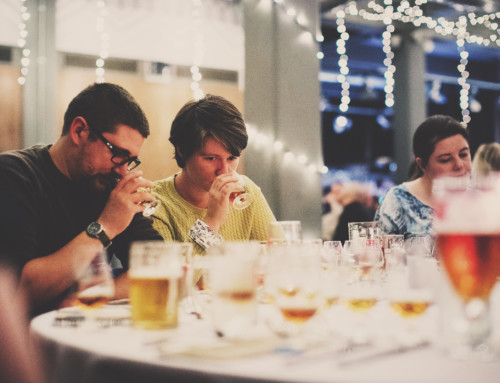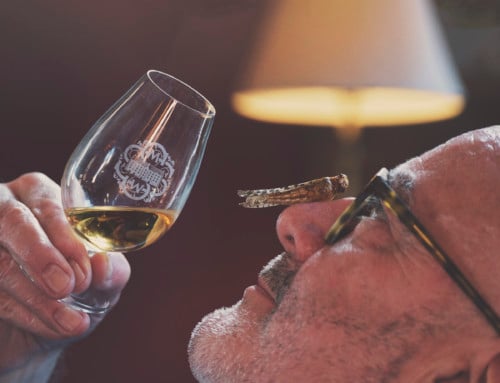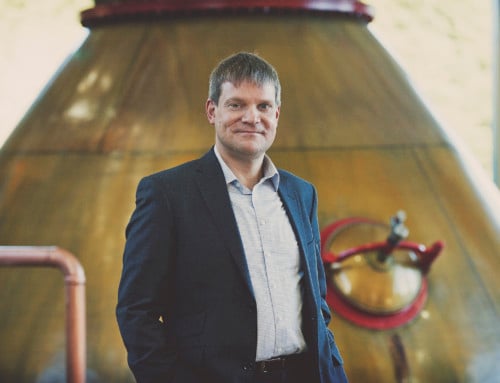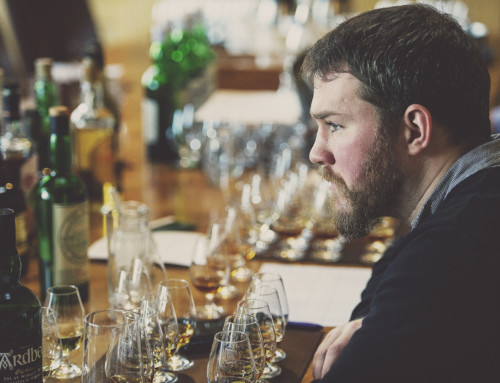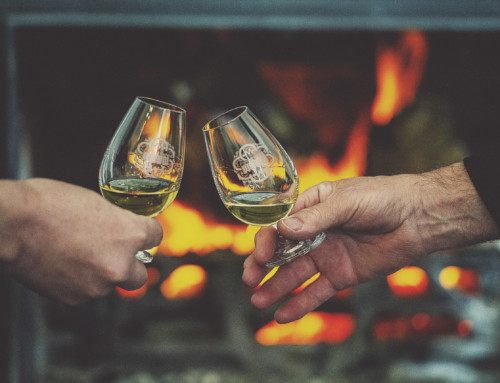You wait almost 100 years for a malt whisky distillery to come along… and then three turn up at the same time.
Edinburgh is about to see a remarkable resurgence in its malt distilling world, with the first new distilleries opening up since Glen Sciennes – also known as Edinburgh distillery – closed its doors in 1925. Unfiltered set out to meet the people behind the city’s new wave of whisky production and find out what we can expect from their distilleries…
HOLYROOD
Capacity: 350,000 litres per year
Key people: ROB & KELLY CARPENTER

Tucked away on a quiet street in Edinburgh’s south side is a 185-year-old building known as the Engine Shed, once used to house steam engines working on the city’s ‘Innocent Railway’.
The structure sits within what was known as the ‘Charmed Circle’ and was once surrounded by breweries and distilleries because of the quality of water that was available. The Scottish Parliament itself – only half a mile away – was built on the site of a brewery, and still sources its water from a bore hole – for flushing toilets rather than making beer.

Glen Sciennes, the last malt whisky distillery in the area – or in the whole city, for that matter – was two blocks away, but closed in the 1920s. Now single malt is set to run again, thanks to the vision of The Scotch Malt Whisky Society’s very own Rob and Kelly Carpenter.
“I got to my late 40s and thought, well, if I’m really going to do this, where would I do it?” says Rob. “We could create a Scottish-style single malt in Canada, and it’s probably going to be pretty good if we’re doing it well, but it wouldn’t have the same cache on a worldwide brand basis as a Scotch whisky. Here, you get the appellation, plus we love Edinburgh – and lo and behold the city didn’t have a single malt whisky distillery. So how do we pull that off?”
Rob and Kelly pulled it off by building a team including David Robertson, former master distiller for The Macallan, Bill Farrar, a brand building expert who developed his trade at Edrington, and Jack Mayo, most recently head distiller at Glasgow Distillery. With building work underway, the plan is to be able to start distilling by May next year. Production capacity will be around 350,000 litres per year, with the ability to distil gin, vodka and liqueurs as well.
PORT OF LEITH
Capacity: 400,000 litres per year
Key people: IAN STIRLING & PADDY FLETCHER
Ian Stirling and childhood pal Paddy Fletcher grew up together in Edinburgh, before finding themselves after university sharing – by Ian’s own admission – a grotty flat in London and developing their passion for whisky.

That passion grew to the point where they started dreaming about making their own whisky – which led them back to where they had grown up.
“It struck us that there was no distillery in Edinburgh, and if we put one in the right place, we could secure revenue from an early stage through tourism,” says Ian. “As an accountant, Paddy was at financial director level, working on various start-ups, and I was working with fine wine merchant Roberson Wine. We had the skills between us to make this happen, a viable plan to get the business up and running – and an interesting perspective about how to produce whisky.”

That perspective came from Ian and Paddy’s belief that the most complex part of making whisky wasn’t in the distilling, where you have fairly strict parameters, but in making the wash – the beer that is distilled into whisky.
“Deciding which yeasts you use, how long you ferment for, at what temperature, we were really struck that nobody in the industry spoke much about these elements,” says Ian. “It seemed like a massive gap in the production.”
That has prompted Ian and Paddy to develop a Knowledge Transfer Partnership (KTP) with Heriot-Watt University’s International Centre for Brewing and Distilling, which is a collaborative project to identify new yeast strains, propagation and fermentation methods, and carry out a series of distillations to build up a library of new-make spirit.
“We have a completely open mind when it comes to where we might go with our flavour profile, but I’m looking forward to being led by the results from our research,” says Ian. “For me, the wonder of whisky has always been the amount of complexity you can have in just one drink, but coming from the wine world, this idea of balance, where you have all the different elements in harmony, is what I’m after. There shouldn’t be peat or a sherry cask overpowering everything. If we had a really ripe peach, or ripe apricot, singing through that whisky, that would be something I’d like to achieve. I’d like to bring that forward and have it more apparent in what we produce. There are so many elements to play with, but by nailing that fermentation and carrying it through the distillate, I think we can achieve something pretty special.”
CRABBIE
Capacity: 165,000 litres per year
Key people: DAVID BROWN
At the end of a non-descript street in Leith, you’d be forgiven for not getting too carried away by the post-industrial site that greets you. But if your imagination needs any prompting to conjure up the transformation that’s about to take place here, David Brown is the man to help.

David is a drinks industry lifer, working over the years with Alloa Brewery, Allied Domecq, Whyte & Mackay and most recently helping to set up the Glasgow Distillery Company. Now he’s managing the establishment of the new single malt distillery bearing the famous Crabbie name, not far from whisky distiller, blender, bottler and pioneer John Crabbie’s original premises at Yardheads, Great Junction Street, Leith.
Crabbie is now owned by Liverpool-based drinks company Halewood Wines and Spirits, which is investing more than £7 million in the new distillery. Initially there will be one pair of small stills, with the option to install two more in the future.

“The stills are deliberately small, with a higher copper contact and a more characterful spirit straight off the bat,” says David. “That’s important if you’re planning to bottle at least some of it as at three or four years old, you have to give it a bit of meat straight away.
“A second pair of stills will probably have a different configuration, and that will give us a bit more versatility and we’ll be able to play some different tunes there.”
In the meantime, David’s priority is sourcing quality casks, so that when the stills start to run it’s going into the right quality wood.
“Halewood’s wine business Barwell and Jones gives us access to some really interesting casks, so I can see us doing some very interesting wine cask maturation and finishes,” he says. “We’ve got a few routes in to some great bourbon casks from Kentucky, and sherry will also be part of our portfolio. I’ve probably spent more time on this than in planning the distillery, wood husbandry is so important.”
Words: Richard Goslan / Images: Mike Wilkinson
This is an excerpt from the feature that appears in the August 2018 edition of Unfiltered, which is delivered four times a year to members of The Scotch Malt Whisky Society. To sign up and receive your own copy, visit https://www.smws.com.au/product/smws-annual-membership-subscription/




